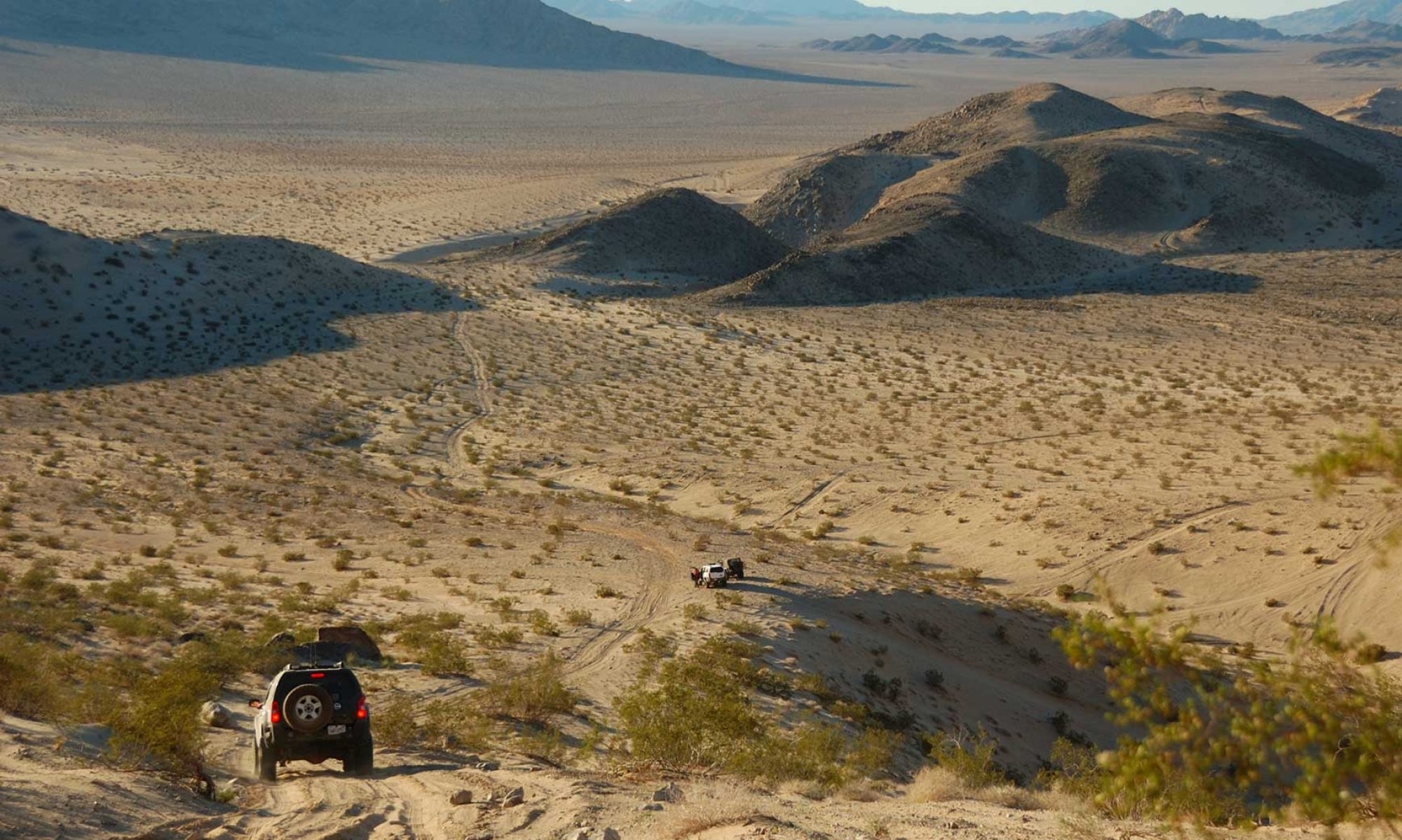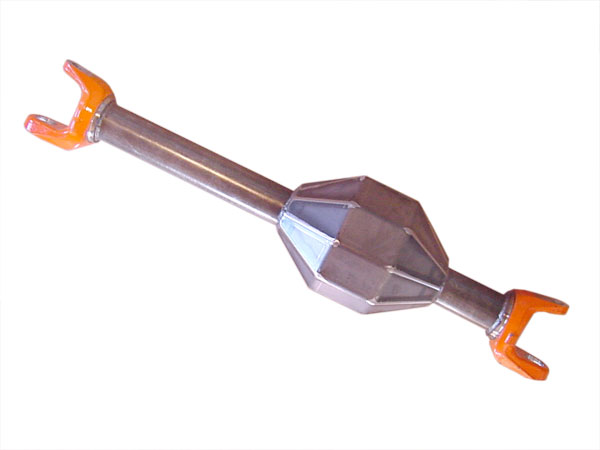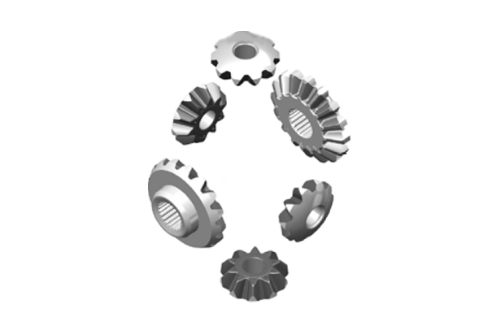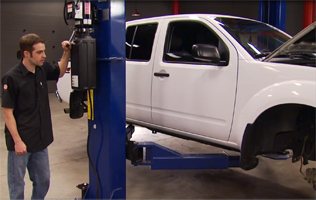 The guys on the show Truck Tech! wrapped up the Nissan Frontier build with a few extra goodies like a Lowrance Off Road GPS system and some of our Rugged Routes maps. You can check out part 2 of this Nissan Frontier build , here: Truck Tech – Wild Frontier Part – 2
The guys on the show Truck Tech! wrapped up the Nissan Frontier build with a few extra goodies like a Lowrance Off Road GPS system and some of our Rugged Routes maps. You can check out part 2 of this Nissan Frontier build , here: Truck Tech – Wild Frontier Part – 2
Truck Tech: Wild Frontier Part 1!
 The guys on the show, Truck Tech! started a new project off the path of what they normally do. This time they pull a Nissan Frontier into the shop and before too long Rugged Rocks got a call with a need for parts. Check out part 1 of this Nissan Frontier build by the guys at Truck Tech, here: Truck Tech – Wild Frontier Part – 1
The guys on the show, Truck Tech! started a new project off the path of what they normally do. This time they pull a Nissan Frontier into the shop and before too long Rugged Rocks got a call with a need for parts. Check out part 1 of this Nissan Frontier build by the guys at Truck Tech, here: Truck Tech – Wild Frontier Part – 1
Nissan Solid Axle Swap Parts
If you’ve been wanting to take your 1986 – 2004 Nissan 4×4 to the next level by taking on a solid axle swap project, you’re going to want to check this out! Although Rugged Rocks now offers a complete Solid Axle Swap kit, we realize that some people want to use some of the kit parts without getting the entire setup. This new option allows you to build what you want while working around Nissan specific solid axle swap challenges.
One challenge? You can’t get very far without running a CV front driveshaft, and there aren’t any CV driveshafts that will bolt to the stock transfercase front output flange. Because of this, we started offering our new front output flange that accepts both a 1310 for 1350 CV flange, which are the 2 most common CV joints found on driveshafts in the off road industry. We also offer custom driveshafts built by one of the best driveline shops, J E Reel.
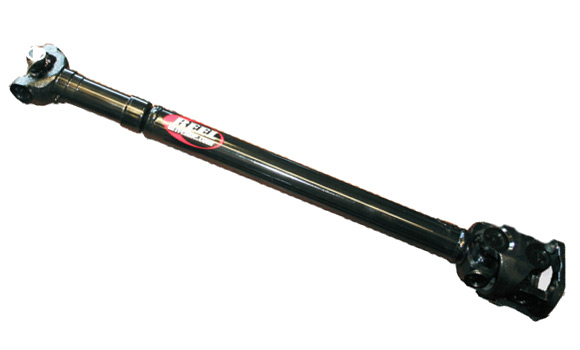 |
1310 Flange-C.V. Driveshaft by J E Reel – Custom Length to 38″ | $439.95 | 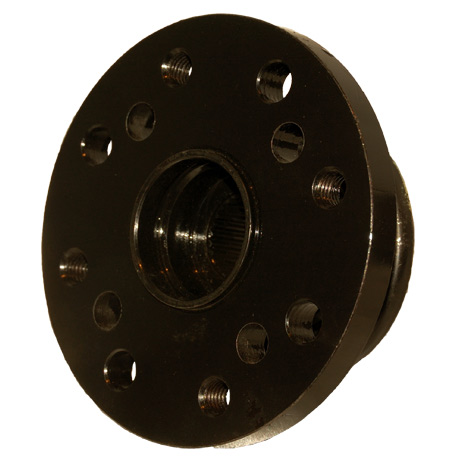 |
Solid Axle Swap Front CV Flange Yoke for Nissan D21/D22 by Rugged Rocks, 1986 – 2004 | $149.95 |
Another very common challenge is figuring out the best way to modify the transmission crossmember to make room for the driveshaft and allows it to move up and down as the suspension cycles. We had been around this block many times and finally decided we needed to just build a new one. The new crossmember maximizes ground clearance and maximizes the clearance around the front driveshaft & transfercase allowing room for a 3-link suspension setup and keeps your exhaust routed near the same place it was from the factory. .
 |
Solid Axle Swap Crossmember for Nissan D21 / D22 by Rugged Rocks, 1986 – 2004 | $119.95 |
When setting up a 3-link suspension system the curve in the frame below the engine often gets in the way of the upper link. Our solution was to inboard the upper link to maximize the clearance for the upper link near the curve.
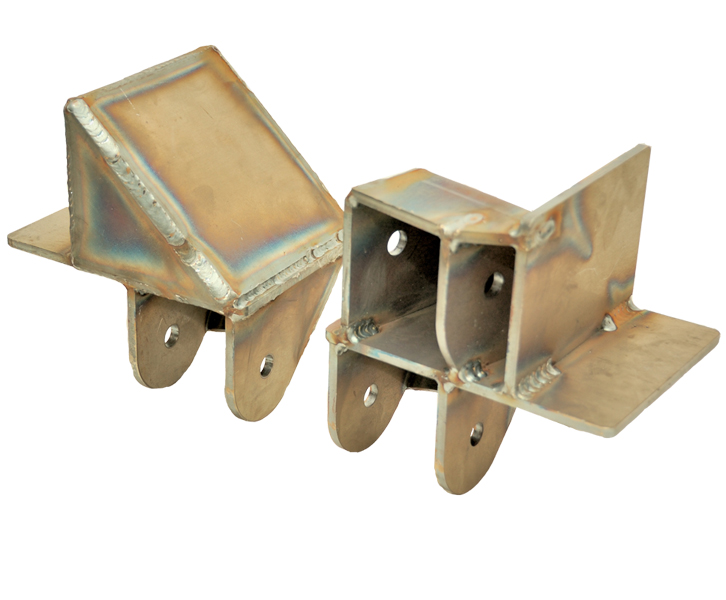 |
Solid Axle Swap 3-Link Frame Side Brackets for Nissan D21/D22 by Rugged Rocks, 1986 – 2004 | $139.95 |
Setting up the steering system for a solid axle swap while trying to maintain a low ride height can also be tricky . The Nissan stock pitman arms have a drop in them, so once a tie rod end is bolted to it you lose up travel. This is because the tie rod on the axle tends to come in contact with the pitman arm and tie rod end. Our solution was to build a new pitman arm that eliminates the drop and replaces the tie rod with a heim joint in double shear. This tucks everything up nice and tight to maximize the potential up-travel or minimize your ride height.
The largest and most noticeable component of the solid axle swap kit is the H233B/Dana 60 Hybrid front axle. This axle housing eliminates many issues found with other axles when used on a Nissan. The Jeep Wagoneer Dana 44 (D44) is a pretty common choice, So I will use this as a comparison. When using a D44, you end up with compound driveshaft angles due to the pinion not having the same offset from the center of the vehicle as the transfercase front output. This causes accelerated wear on the driveshaft’s U-joints and can cause premature binding of the U-joints, limit suspension travel and cause interference issues between the front driveshaft and transmission crossmember. On the H233B/D60 hybrid axle, the pinion offset has been taken into consideration, minimizing compound driveshaft angles.
The caster and pinion angles on the D44 also need to be modified because the axle will need a much higher pinion angle to suite the new application. This is a modification that should be done a professional shop to ensure that the vehicle doesn’t have any strange driving characteristics, potentially rendering it unsafe to drive as well as keeping proper driveshaft angles. The caster & pinion angles have been taken into consideration when designing the H233B/D60 hybrid axle to keep the proper caster while maintaining proper driveshaft angles.
The D44 also doesn’t have much room to mount coilovers between the differential housing and the steering knuckle on the driver side. This often times requires welding directly on the cast housing which shouldn’t be done. We took this into consideration when designing the H233B/D60 hybrid axle by slightly widening the axle to 64″ and using a fabricated steel housing which can safely be welded.
For a 3-Link setup on a D44, a truss needs to be built to eliminate the need to weld to the cast housing. This takes up quite a bit of room and can get in the way of maintaining maximum up-travel and/or a low ride height. As mentioned earlier the H233B/D60 hybrid axle has a fabricated housing that you can weld to directly, allowing for a more compact suspension design.
With solid axle swaps it’s common to run 35″, 37″ or even larger tires. Regearing to compensate for this large increase in tire size is a necessity. 1986 – 2004 Nissan 4×4’s came with gear ratios ranging from 4.3 to 4.9 from the factory on about a 31″ tire. The deepest ratio that the D44 and the H233B have in common is 5.13, which means you cant get the vehicle geared as deep as it should be. There is a 5.57 ratio available for the H233B axle which gets these vehicles geared down pretty deep, right around where they should be. It’s also nice to be able to use the same 3rd member both front and rear.
As you can see, there are many design advantages to using the H233B/D60 hybrid axle, and the obvious strength increase by using large 3.5″ axle tubes, D60 kingpin steering components and D60 axle shafts. Clearly the H233B/D60 axle has many advantages over it’s most popular alternative.
When using the H233B / D60 hybrid axle, you have a few options when it comes to the spline of the axles shafts, as long as you’re running an ARB locker. We typically use the 1.31″ diameter 33-spline version of the H233B differential and cut/spline the D60 axle shafts to suit. However if you wish to go to the larger 1.5″ 35 spline shafts, you can, with an ARB, as long as you install the proper ARB internal gearset into either an ARB#RD135 or ARB#RD136 locker.
